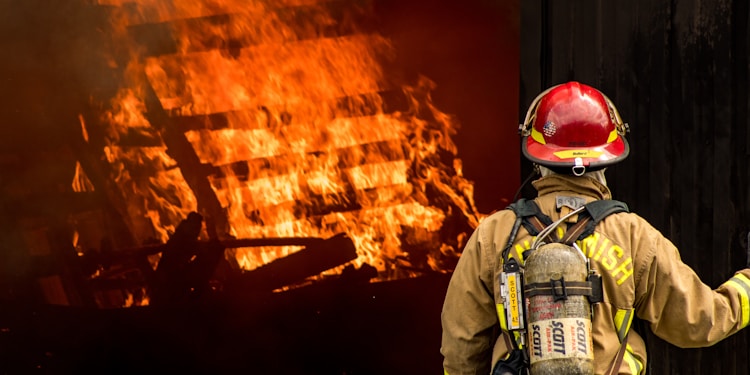There has recently been a massive lawsuit against firefighters manufacturers for using harmful chemicals in their turnout gear. The Firefighter Turnout Gear lawsuit has shown just how toxic the materials are to our heroes, and how many decades this has affected our bravest citizens.
What Is Turnout Gear?
Also called bunker gear, turnout gear is the term firefighters use to describe their uniform. It references the full protective clothing from boots to helmets.
Specifically, turnout gear includes boots, pants, coats, hoods, gloves, and helmets. Each element of the turnout gear will contain layers of protection such as a thermal liner to protect against heat, a moisture barrier to protect against the intense amount of water they use, and an outer shell that should take in the majority of the damage a fire will cause.
Although firefighters’ main enemy is fire, they often have to deal with chemicals in their job too. These chemicals come from the foam needed to suffocate the flames. The moisture barrier in the turnout gear blocks both the water and the chemicals keeping the firefighters safe from their own defenses.
Or that’s what was told.
Why Are There Chemicals On The Gear?
For decades, turnout manufacturers have told firefighters that the uniform is safe to use, however new evidence suggests that the moisture layer designed to stop the toxic foam from harming our heroes could be causing their own damage.
PFAS or polyfluoroalkyl is a fluorine chemical. It has been praised as an amazing chemical to protect people against fire damage and stop moisture from seeping through. Killing two birds with one stone, it was considered a magical fix.
Chemicals such as these are needed to protect firefighters, but not at the cost of harming them in a different way.
The History Of The PFAS Scandal.
PFAS is a type of chemical. This type is known to be toxic and has already been linked to a number of health problems including cancers and weakened immune systems. These detrimental side effects didn’t need a career’s worth of exposure to form either. Low doses of the chemicals were enough to ignite a medical issue.
Despite this, no one batted an eyelid when PFAS was used on turnout gear. It was first invented in 1963, but just 7 years later the Internal DuPont sent a memo warning higher-ups about the chemical. Blatantly stated in the memo, someone explains that PFAS is “highly toxic when inhaled”.
That same year a chemical producing company warned the national fighter fighting industry of their own findings. In their own research, they discovered that PFAS is toxic to fish. However, it seems as though nothing came from this warning.
Although there were numerous concerns at this point, in 1976 PFAS equipment was being rolled out to firefighters across the country.
A year later warnings came back to 3M (a manufacturer for firefighting gear) explaining the chemicals were “more toxic than anticipated”.
More and more warnings came through until 1981 when 3M denied ever knowing that PFAS could be dangerous.
In 1983 and 1990, 3M ran studies that show that PFAS causes immunity weaknesses and testicular cancer.
It took 10 more years, but the Department of Defense told 3M to stop using PFAS in firefighting foam due to the undeniable evidence of harm.
In 2002 the Fire Fighting Foam Coalition was created to defend PFAS and its usage. They downplayed the harm that PFAS can cause. Despite mourning evidence that PFAS was toxic, the FFFC gained traction in the government.
In 2016 the first lawsuit against a firefighter company was issued, but the case was dismissed.
In 2020 a study was made on the gear itself and the ratio of firefighters who developed cancer. The study showed that significant quantities of PFAS were being absorbed by the firefighters through the turnout gear.
This new study has managed to convince others that PFAS is toxic and needs to be addressed.
What Can You Do?
If you have used turnout gear from 1976 onwards, you should join the growing number of activists trying to gain compensation and change due to the blatant disregard for our heroes’ lives.
Summary
Although the journey has been a long one, more people are waking up to the issues surrounding turnout gear. The chemicals used to create fireproof and moisture-proof protection are also harming our firefighters.
Unfortunately, there is nothing to replace the chemicals at the moment, but you might be due compensation.











